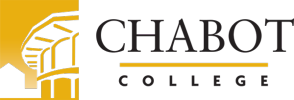
Environmental Studies
This program map from the 2024-2025 catalog year represents one possible pathway to complete this program. Your pathway may vary depending on your transfer plans and also previous college credit, including AP Test scores, concurrent enrollment courses and high school articulated courses.
I'm ready to get started. What do I do next?
- Review this program map to get an overview of the required courses
- Meet with a counselor to develop your customized student education plan www.chabotcollege.edu/counseling
- Use DegreeWorks, an online student education planning tool, to track your progress toward graduation www.chabotcollege.edu / admissions / degreeworks
The Associates of Arts in Environmental Studies provides students with a multidisciplinary overview of the relationship between humans and the physical world. Contemporary environmental issues are examined from a holistic perspective, including foundational knowledge in systems in the lithosphere, atmosphere, biosphere, and hydrosphere, but emphasizing also the political, social, economic, and cultural context in which environmental issues arise. The curriculum emphasizes sustainability, environmental justice, and the wisdom of all global citizens to combat environmental demise and work towards a better future for all.
Students can select from a variety of elective classes based on their interest in this interdisciplinary field. Selection of electives may also be steered by what would best match the school a student plans to transfer to.
What can I do with this major?
This degree is a launching pad to pursue higher degrees where students can specialize in interest areas for a variety of careers.
Practitioners focused on environmental advocacy and justice work to develop more equitable systems in response to environmental demise within social structures and provide advisory services and education. This may include business and industry areas not traditionally associated with the environment as sustainability becomes a necessary component of public and private sectors of the economy.
Examples of these career opportunities include
-
Environmental Planner
-
Sustainability Specialist
-
City Planning
-
Greenhouse Gas Permitting Consultants
-
Environmental Health and Safety Officer
-
Environmental Educator
-
Environmental Compliance Inspectors
-
Waste Management Specialists
-
Public Relations Specialist
-
Federal Executive Branch
-
Recycling Officer
-
Environmental Consultants
-
Sustainable Urban Planners
-
Transportation Analyst
-
Administrator
-
Citizen Activist
-
Consumer Affairs Specialist
-
Energy Impact Assessor
-
Environmental Auditor
-
Historic Preservationist
-
Journalist
-
Land Acquisition Analyst
-
Environmental Lawyer
-
Open Space and Recreation Planner
-
Water Control Inspector
Students that complete graduate work and specialize in weather and climate studies, ecology, environmental engineering, physical geography and geology can find jobs focused on research and monitoring, such as
-
Agriculture and Natural Resource Engineers
-
Animal and Plant Scientists
-
Geoscientists
-
Marine Scientists
-
Environmental Health Specialists
-
Environmental Technicians
-
Wildlife Managers
-
Forestry Management Specialists
-
Horticulturalists
-
Water Quality Scientist
-
Air Pollution analyst
-
Natural Resource Conservation
-
Environmental Analyst
-
Environmental Educator
-
Environmental Scientist
-
Wildlife Biologist
-
Environmental Remediation
-
Watershed Manager
Learning and Career Pathway
- Science, Technology, Engineering, Mathematics & Environment
Icon Key
Semester 1
English 1- Critical Reading and Composition
Math Course for General Education: see a counselor to choose the appropriate course.
General Education Course- see a counselor to choose the appropriate general education pattern and general ed course option for this term.
Semester 2
Humans and the Environment (Choose ENSC 11 or ENSC 10)
General Education Course- see a counselor to choose the appropriate general education pattern and general ed course option for this term.
General Education Course- see a counselor to choose the appropriate general education pattern and general ed course option for this term.
General Education Course- see a counselor to choose the appropriate general education pattern and general ed course option for this term.
Elective- see a counselor to choose a course that counts for elective units (can be any credit course).
Semester 3
GEOS 11 or GEO 1 (Choose one)
List A Course #1
General Education Course- see a counselor to choose the appropriate general education pattern and general ed course option for this term.
General Education Course- see a counselor to choose the appropriate general education pattern and general ed course option for this term.
General Education Course- see a counselor to choose the appropriate general education pattern and general ed course option for this term.
Semester 4
List A Course #2
List A Course #3
General Education Course- see a counselor to choose the appropriate general education pattern and general ed course option for this term.
General Education Course- see a counselor to choose the appropriate general education pattern and general ed course option for this term.
General Education Course- see a counselor to choose the appropriate general education pattern and general ed course option for this term.
List A
Choose three courses from the list below: